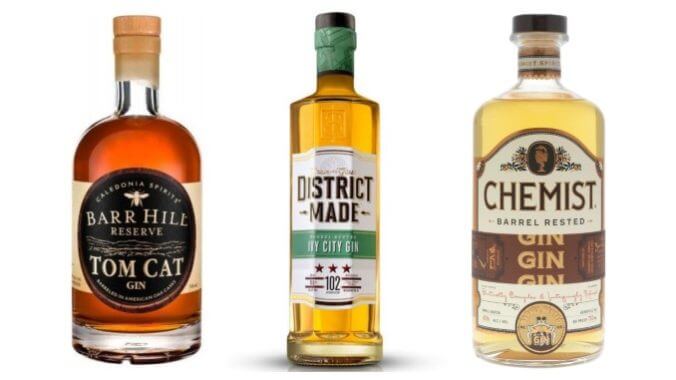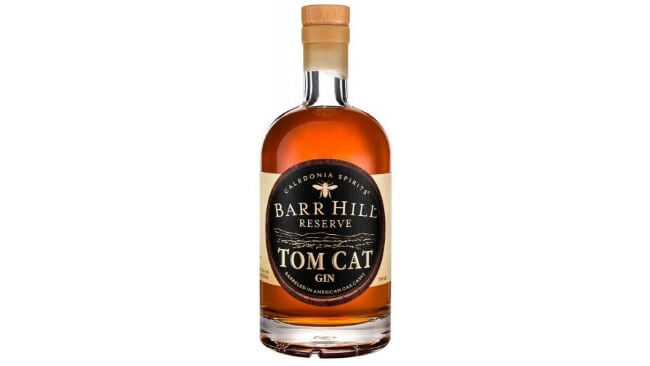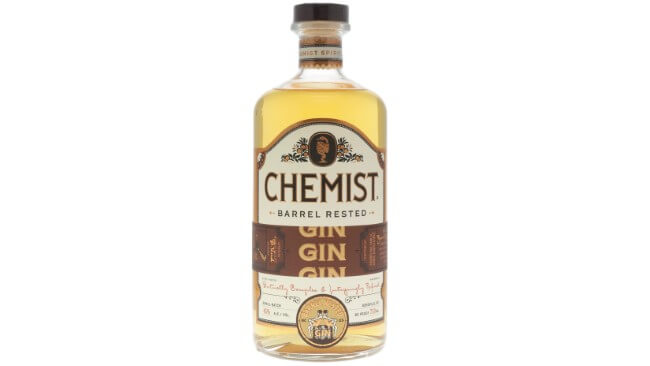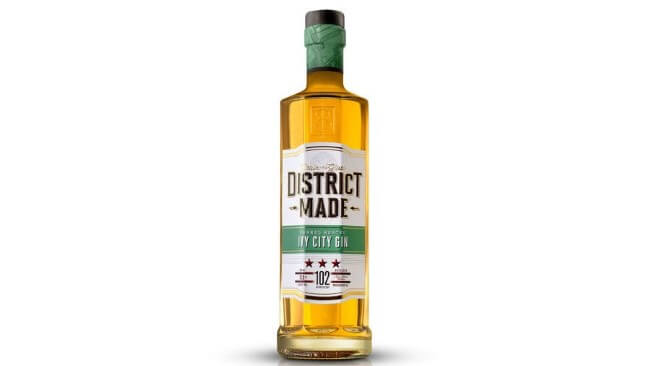Barrel-Aged Gin: Tasty Innovation, or Affront to Tradition?

As a spirit, gin has always been a godsend to the burgeoning American craft distillery. The reason why is no secret: Gin, like vodka, is fast and relatively inexpensive to make—as soon as your stills are in operation, you can begin distilling neutral spirits and infusing them with flavors in your preferred way to create gin. For this reason, gin has been one of the spirits that helped to build the American craft distillery movement, keeping the lights on at so many businesses in the early years while they wait for products requiring extensive wood aging (such as various styles of American whiskey) to mature. Gin is niche, to be sure—there tends to be a demographic who loves it, and another who hate it—but it’s an extremely reliable niche.
There’s an outlier in the gin world, though, a subgenre that combines the flavors more commonly found in American whiskey or aged tequila with the bright, juniper-driven backbone that has been a staple in gin for centuries. This is the curious world of barrel-aged (or often “rested”) gin, a corner of the gin market that seems to attract an outsized amount of debate and argument. We’ll taste some of these gins below, but first—a little context.
Personally, barrel-aged gin was never something I gave much thought to over the years. It was the kind of niche product you would occasionally see at certain craft distilleries, and it seemed like a fun novelty to me—gin that had spent time inside a reused whiskey barrel, or even in newly charred oak, picking up some of the same combination of char, vanilla and barrel-derived sweetness that you expect to find in American whiskey, or in a category such as aged tequila. It struck me as an intriguing change of pace, though not something I’d necessarily seek out. My wife, on the other hand, immediately took a shine to barrel-aged gin, and it became one of her favorite spirits categories for cocktails. To each their own.
It wasn’t until later that I began to realize the polarizing effect that barrel-aged gin seemed to have on drinkers. In the last few years, as I’ve broached the topic to more people, I’ve come to think that barrel-aged gin exposes some kind of fault line in popular opinion among spirits geeks—people either seem to wholeheartedly love the substyle, or passionately hate it, seeing barrel-aged gin as something akin to a liquid oxymoron, obliterating the entire point of gin in the first place. I’ve heard both sides on this debate from everyday drinkers, from professional spirits writers, and even from the distillers themselves. At every level, the disagreement persists. Even when I visited California’s pioneering St. George Spirits back in the fall, a company that has been massively influential on American gin over the last few decades, I found the brand’s two head distillers completely disagreeing with each other on the relatively merits of barrel-aged gin. The schism is real.
So, what do the proponents of barrel-aged gin enjoy about the style? Well, the act of aging in a reused whiskey barrel (or other barrel type, which is also a possibility) has a tendency to smooth out any rougher or sharper edges that exist in a spirit, gin included. This can have the effect of somewhat blunting the botanical flavors of gin, such as the sharpness of citrus, spice, herbal tones or the fruity-piney-bitter profile of juniper. In barrel-aged gin, those flavors can be made more subtle, and arguably more harmonious, paired with light impressions of oak, vanilla, residual whiskey, or toffee-like sweetness. Understandably, barrel-aged gins are typically somewhat sweeter than their traditional counterparts, more in line with the archaic Old Tom Gin style. This can also make barrel-aged gins lovely for simple applications such as the gin and tonic, provided the drinker doesn’t mind a slightly sweeter drink. Barrel-aged gins can also bring intriguing transformation to classic gin cocktails in the same way—you might consider experimenting with these gins in a martini, or Last Word, or Corpse Reviver #2 to get an idea for if you like them.
Barrel-aged gin detractors, on the other hand, tend to see the style as shoehorning in flavors that don’t belong in the gin conversation, perhaps as a means of trying to increase gin’s marketability to those who prefer aged spirits such as whiskey. They believe the barrel flavors have a tendency to overshadow the delicate dance of gin botanicals, covering up the subtleties of the style in homogenized sweetness that is gained in the barrel-aging process. At the end of the day, you might call them gin purists.
Suffice to say, both sides are correct in their own way, and I’ve always been of the mind that these two styles can happily coexist in the same liquor cabinet. I might not reach for barrel-rested gin quite as often as the standard stuff when making a G&T or Last Word, but as an occasional change of pace it can be really delightful, if you’re in the mood.
Ah, but how do individual barrel-aged gins differ from each other? Well, I happen to have three fairly different examples on hand to taste! So let’s do exactly that.
Tasting: 3 Different Barrel-Aged Gin Brands
Barr Hill Tom Cat GinABV: 45% (90 proof)

As the name would imply, Vermont’s Caledonia Spirits sees this product as an Old Tom gin, a somewhat nebulously defined historic style that has been produced with somewhat greater frequency in recent years. What makes an Old Tom gin distinct does not always seem to be consistent, but the one thing that is agreed is that the style tended to be somewhat sweeter than the prevailing “London dry gin.” And given that this is a sweeter gin, made with the company’s proprietary raw honey techniques, that makes sense. Old Tom gin wouldn’t historically have been barrel-aged, but this expression certainly is. Indeed, the distillery says they use “new American oak barrels” for Tom Cat Gin, so presumably this is going into freshly charred oak. The significantly darker color does reinforce that notion.
On the nose, Tom Cat is redolent in honeycomb and perfumey juniper, with lots of floral impressions and herbal tones that suggest lemon thyme. On the palate, this one turns quite sweet and the honey really makes itself felt. That sweet, floral combination is met by lemon-lime citrus and slightly bitter and resinous juniper that brings a touch of balance, but overall it definitely favors the sweetness. Overall, it’s a little bit potpourri-like for my taste, but I’ve never been the biggest fan of honey-derived flavors. This gin does display a solid background heat for the proof as well.
Chemist Spirits Barrel-Rested GinABV: 45% (90 proof)

Asheville, North Carolina’s The Chemist presumably is making this barrel-rested gin with their classic American Gin as its base, and overall it’s an excellent baseline example of how whiskey barrels can influence and transform the base spirit. You might say that if you find this particular gin appealing, you’re likely a person who will enjoy barrel-aged gin as a style—and if you find this unappealing, the opposite is likely true. This one feels like a true bellwether.
On the nose, Chemist’s Barrel-Rested Gin is soft, delicate and toasty, with light impressions of caramel, mild juniper, hints of oak and complex spice tones. On the palate, it’s the spices that really stand out for me—pepper, anise and something that really seems like a strong impression of coriander, putting me in almost a witbier mentality. There’s a little vanilla, and mild sweetness, while the ethanol is quite subdued and gentle despite it being the same proof as the preceding Barr Hill Tom Cat. All in all, this is just extremely gentle and easygoing—a pleasant, spicy little dram to drink neat. It makes a delicious, barrel-aged version of a Last Word.
District Made Spirits Barrel-Rested Ivy City GinABV: 51% (102 proof)

I recently tasted a few whiskeys from Washington D.C.’s District Made Spirits, a distillery whose lineup specifically highlights the flavors of the Abruzzi rye grain. But it’s not just the bourbon and rye whiskey that are made with that rye, it’s the gin as well. This entry stands out in a few ways, most immediately for the advanced proof—I don’t think I’ve ever sampled a barrel-rested gin north of the 100 proof mark before. It’s apparently aged in both newly charred and re-used American oak, but it’s not drawing a ton of color regardless—this is a very pale straw in the glass, lightest of the three I’m tasting here.
On the nose, this barrel-rested gin displays plenty of juniper and strong impressions of classic gin notes—resin, citrus, herbal notes, etc. It’s not quite as barrel forward, seemingly using a lighter touch in that dimension. On the palate, this is strong and boldly flavored, with lots of juniper, ginger ale, peppercorn, lime and moderate residual sweetness. Of the three I’m tasting here, I’d say this sample has the most conventional, classic gin profile, although here it’s been ramped up with a greater degree of assertiveness, and given subtle kisses of caramel and vanilla. If you want to just dip a toe into barrel-rested gin, this would be a place to do it, though the overall assertiveness of its approach means that this gin would no doubt make for some very punchy cocktails.
Jim Vorel is a Paste staff writer and resident beer and liquor geek. You can follow him on Twitter for more drink writing.